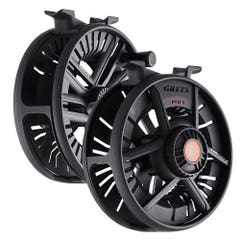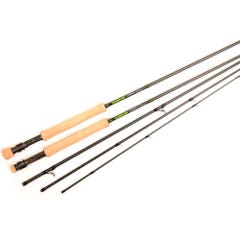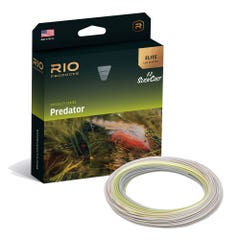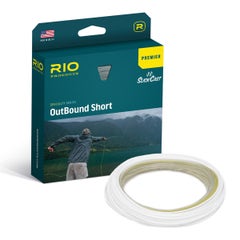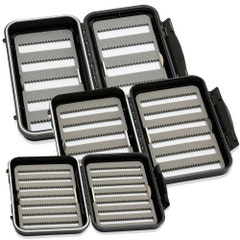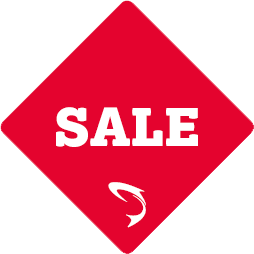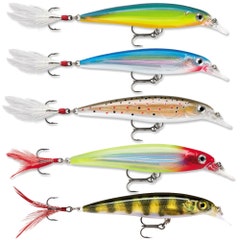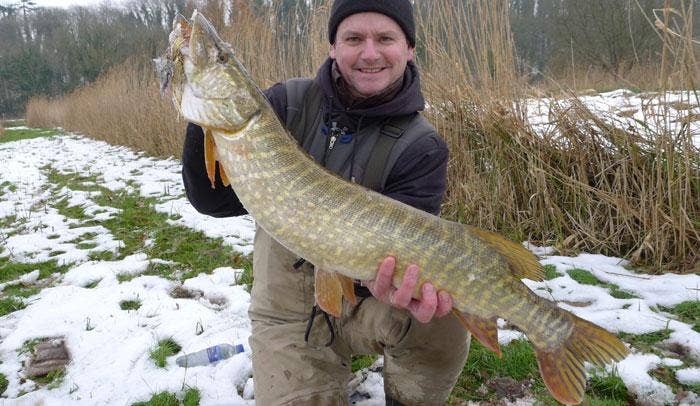Pike fishing has been a popular side to coarse fishing for many years with some anglers choosing to specialise solely in the pursuit of Esox Lucius. Spinners, spoons, dead baits, live baits (back in the days that this method was widely allowed) and wobbling were all common techniques to tempt a freshwater croc and it didn’t take long for fly fisherman to tangle inadvertently with pike while chasing trout. It soon became very clear to many that this was another excellent species that could easily be targeted specifically with an artificial fly or lure.
As with most facets of fly fishing a select few pioneered this aspect of the sport in more recent times although records of people catching pike on the fly go back many years. It was a learning curve that was sped up by the knowledge that many had already gained from years of coarse fishing. With a myriad of waters all over the UK and the world, the popularity of chasing pike has grown year on year, offering an exciting alternative for many during closed seasons.
Found in almost all patches of water from lakes and reservoirs to canals and rivers, pike have populated anywhere that holds bait fish and their numbers have grown. Many of the UK’s most famous trout reservoirs hold some monstrous pike that have enjoyed a diet of both coarse fish and trout alike; for many years the British record has come from one such lake.
About Pike and Where They Live
Esox Lucius, also known as northern pike, are a species of carnivorous freshwater fish from the Genus Esox (pike). Their name comes from the similarity in body shape to the historical weapon which was a long wooden pole, which was known as a ‘pike’. They are distributed widely across the northern hemisphere from North America, throughout Europe and all the way across to the far eastern side of Russia. Living an all types of water both still and running, from fresh to brackish, pike can establish almost anywhere that a food source can be found.
Their diet is made up of several food types and, like most predators they are opportunistic and will feed on just about anything that becomes available to them. Pike are predominantly an ambush predator, often lying almost motionless until an unaware prey comes within striking distance making for some exciting action that seemingly comes from out of nowhere.
Its hydrodynamic shape and large tail, anal and dorsal fin, give it huge propulsion and great acceleration from a standing start over a short distance. This together with a huge mouth and multiple rows of backward facing teeth make it a one-way street for most that stray too close. Insects, small fish, crayfish, ducklings, frogs, mice and other smaller pike are just some of the things that pike have been known to predate on.
Their colouration creates a great camouflage particularly in slightly coloured water. Greens and olives run the length of their body interspersed with yellowish spots and stripes breaking up their outline in much the same way as most big cats. Their belly is light and, as seen in many shark species this helps to hide them when viewed from below.
Growing to weights of over 50lbs the pike is a formidable predator and can live in excess of twenty years reaching lengths of up to 130cm or more. The largest fish are all females with male fish significantly smaller (although they have been recorded at weights near 30lbs). Pike spawn in the spring normally when the water temperatures have reached around 9°c with eggs hatching around fifteen days after fertilisation with a large proportion of these that will never make it to adulthood.
Pike love snags and features which give them cover and over hanging trees, reed beds, sunken trees and weed beds are great holding areas. Despite being potentially very large and viewed by many as a ferocious fish, they are remarkably delicate and require plenty of care when landing and unhooking.


Pike Fishing Seasons
Traditionally pike anglers would target their quarry in the colder months of the year, typically from September throughout the winter until early spring. However, pike can be targeted through the summer as they follow the same fishing restrictions as the coarse fishing closed season which runs from the 15th of March until the 16th of June.
Many of the UK’s larger trout reservoirs have started to allow pike fishing alongside the trout fishing or have created specific days for pike anglers to have the opportunity to chase some of the monsters that lurk in these huge bodies of water. Some well-known venues to fish for pike with a fly rod include:
Along with these, there are many club waters and day ticket venues available all around the country details of which can be easily found via the internet. Before heading out with your fly rod in hand please get confirmation if it is allowed on the individual water that you are looking to tackle.
Getting Started With Pike Fly Fishing
By Jonathan Tomlinson
Pike on the Fly Tackle
In years gone by when pike fly fishing was far more in its infancy and was a lot less popular, anglers had very little choice when it came to selecting their pike fly fishing tackle. Very little ‘off the shelf’ gear was available to them and modifications of existing gear was needed to fill in the gaps. Thankfully now, with it is popularity increasing all the time many manufacturers are producing a huge range of tackle specifically for the needs of the pike angler.
Pike Fly Rods
When it comes to rods, you don’t need a #11 rod to land a 30lb pike. If you are an experienced angler, you could quite reasonable do this on a #7 or in the right hands even a #6. The likelihood of you being able to cast a fly large enough to actively target and tempt a fish of that size is very slim. That’s the biggest reason for using much heavy weights of rods and lines when targeting pike - it is simple not possible to cast really large flies on lighter rods.
Most anglers will look to choose a pike fly rod of 9’ in length and with a line rating of between #9 and up to #11. This will allow for the larger less aerodynamic flies to be cast with much greater ease and are the most popular rods sizes of choice. A medium-fast action with plenty of low-down power in the bottom of the blank are ideal and many saltwater anglers will have existing gear that is more than suitable for the job.
Most manufacturers have seen the levels of demand for pike specific rods and there are now a large variety of price points catered for. Not only is there a large choice of rods at various price points there are also a selection of pike fishing kits that will include a rod, reel, backing and line and are a great place if you want to have a go at pike fly fishing.
Pike Fly Reels
My recommendations for pike reels will always have me pointing people in the direction of a large arbor reel with a good strong disk drag system that has a bit of stopping power behind it. Carrying numerous lines means spare spools and cassette reels can be a great alternative to more traditional solid spools and many are now made in sizes that are big enough to hold a large diameter pike line.
These can either be a cast framed reel or can come with a fully machined frame, The cast frames are cheaper but are less durable than the machined aluminium versions. These reels should be able to carry 100 yards of 30lb dacron or heavier braid as well as the fly line.
Make sure you choose a size that has enough capacity and will match the weight of your chosen rod. It’s always important to try and get your chosen outfit well balanced. It can feel like a very long day when fishing and heavy line rated rod that is badly balanced.
Pike Fly Lines
There are several lines that are ideal for throwing large flies needed for piking, many of these will be named quite obviously as a pike fly line while others will be more generic but are also very suitable for throwing big flies, like the RIO outbound short.
These lines will come in various densities to allow you to fish very shallow waters with floating lines down to the deepest of depths in big reservoirs. Full floating, sink tips and full sinking lines in both single and multiple densities are readily available.
Regardless of the sink rate all these lines have similar tapers, a relatively short head that is often more front weighted with quite aggressive front tapers that are perfectly at home throwing the largest of pike flies with minimal false casting. This is especially handy if fishing rivers, canals or any area that has a limited amount of space for back casts.
These lines on the whole are multicoloured, with separate colours for the head (the heavy part of the WF) and for the running line (the thin level line that you shoot). This gives the angler a very clear indication of where the optimum loading point is and makes them pretty fool proof, when the colour change gets to the end of your rod when false casting that’s enough, that’s the time to let it fly.
Pike Leaders
With a mouth full of row after row of sharp teeth, many anglers will have in the past been fishing for trout with larger streamers and come into contact with pike. Often a heavy take is followed by the feeling of nothing and on closer inspection reveals no fly and a clean cut to their leader. With the inherent problems caused by a pike’s oral armoury, anglers targeting them will undoubtedly use some kind of a wire trace at the end of their leader set up.
Several manufacturers sell off the shelf pike leaders, these have a knotless tapered leader with a stiff butt and a steep taper to aid turnover of big, air resistant flies. Attached at the end there will be a short wire trace that either has a small clip or knot-able wire to attach to your fly. Some anglers will have their own way of making leaders choosing to have a thick stiff butt section tapering down in diameter again to a length of knot-able wire either with or without a clip. Personally, I prefer to tie the wire directly onto the fly with a perfection loop which increases the movement of the fly without adding the extra weight of a clip.
Some anglers have done away with wire altogether and work on the premise that when a pike is locked into feeding mode, they are not in the slightest bit leader shy and are preoccupied by your fly. They opt for a level length of high breaking strain fluorocarbon or stiff nylon of 80-130lb tied directly to the fly. The larger diameter and resistance to abrasion is enough to counteract the mouthful of teeth and lead to little or no issues with being bitten off. Overall leader length is easiest to manage between 6’ to 9’.
Pike Fishing Flies
As with all fly fishing when it comes to your choice on what to tie on, it can be quite overwhelming, none more so with the choice of pike flies. More traditional tied patterns using a single hook was the style most popular but, in recent years fly development has come a long way and new ideas are being tried all the time to give even more movement and lifelike attributes to the pattern.
Many have moved from the more traditional natural materials such as bucktail and rabbit strips which can give great profiles and movement but have a tendency to hold onto water and make casting more challenging.
Development of synthetic man-made fibres for both saltwater fishing and pike fishing have opened up a whole new avenue to the fly tyer. These materials offer great movement, sparkle and size with very little weight and are often very quick to shed excess water once lifted out of the water making casting larger and larger patterns easier. With the mantra that big flies mean big fish these materials have made that easier than ever.
Flashabou, EP fibres, tinsels and unique hair are just some of the fly tying materials that are frequently seen, making bulky patterns simple to cast and fish. Articulated patterns with wagging tails have given flies movements similar to that of jerk baits and traditional jointed lures.
Tube flies have made the transition in to fly fishing for pike and huge patterns approaching 12 inches in length are now a reality and can be cast with relative ease - take a look at all of our pike flies. Surface patterns that imitate frogs, ducklings, mice and general disturbance or popping patterns are also popular, particularly in the summer months when Pike can be more active and willing to chase.


Some other items you will require are:
A fly Box: There are many types of carrier or box available to house large Pike flies. Personally, I use a similar style as I do for my saltwater fishing. Large, deep, waterproof boxes that clip shut and form a seal stop flies from getting wet and if they happen to fall in the water the box will float. Depth of box is important so that your flies aren’t crushed when being stored. My top choice is the Fulling mill Xtreme fly boxes. Other options are wallets or rolls - the wallets offer a series of zip lock pouches inside of a case that allows for a large number of flies to be carried in a very small amount of space and often have a clip that can be easily attached to an angler or a pack. The fly roll style carrier is essentially a piece of material that has plain or slotted foam on one side into which you hook your flies, before being rolled up on itself and strapped together either with an elasticated cord or with Velcro. These, like the wallets allow a lot of flies to be carried without taking up much space at all.
A net: This is self-evident but having a big net is essential. Pike are a long species and require a much larger net than you would need for trout fishing, knotless mesh or even rubberised with a good deep drop will make landing a pike of any size a much easier task. If you are coming from a coarse fishing or carp background than the likelihood is that your large coarse fishing net will be suitable if not a little less convenient for the angler on the move.
Unhooking mat: Despite their stature pike are a surprisingly delicate species and fish care is of the upmost importance. An unhooking mat is essential for the care and protection of your catch once you have netted your fish. This large padded mat offers even the most lively of fish as much protection from knocks as possible and gives you an area that is perfect for unhooking and photographing your catch. These are available widely and come in various sizes, many will roll or fold up and can easily be carried in a bag or clipped to a pack.
Weigh sling and scales: Coarse fishing has really led the way particularly with big carp fishing and specimen fishing when it comes to fish care. If you aren’t lucky enough to have a landing net that has a built-in set of scales, a weigh sling and a good pair of scales will allow for a very accurate weight for your catch. The large, often fine mesh sling can be zeroed with your scales beforehand so you will know exactly what your catch weighs while keeping the fish safe and well protected. They often will fold up into a very small and convenient size that can easily be carried around.
Forceps/pliers/wire cutters: Most trout fisherman will have a set of forceps already but when pike fishing, they need to be bigger and more heavy duty. Pike can really engulf a fly when on the attack and short handled forceps really just won’t cut the mustard. Extra-long handles or specialist pliers will give you more reach whilst keeping your fingers far away from any potential mishaps on a pike’s teeth.
Unhooking/Filleting glove: A specialist glove is a very useful item that many carry these days to avoid any mishaps when unhooking or handling a Pike. Pike anglers will often hold a fish by the gill plates which have a ridge running along the bottom which makes for easy handling, but one false move could have a bare hand cut by sharp gill rakers hidden behind.
JT joins professional guide and international angler, Ben Bangham, for a day's river pike fishing on the fly. Discover some fantastic top tips and advice to help improve your fishing for pike.
Casting Pike Flies
Many people get apprehensive when it comes to casting heavier line rated rods and big flies, especially when they have spent their fly-fishing career throwing tiny flies at wild trout on small streams or lake fishing. The fundamentals of the fly cast are the same regardless - a smooth continuous acceleration to a stop is the basis whether on a 2 weight or a 10. The rods designed for pike are powerful rods that do bend despite the misconception that they will be stiff. When teamed up with a short-headed pike line these rods load deep and full and can be cast with little effort if you keep to a few simple rules.
- Don’t try to carry too much line. With dual-coloured lines that clearly indicate where the head finishes and the running line begins, that is your optimum loading point. Once this has reached the end of your rod whilst false casting that is enough, shoot from this point and you will get the best out of your outfit and spend less time casting and more time fishing.
- Large, heavy flies are far from aerodynamic in any way and will slow down the turnover of your line when casting. Don’t try to be too fast with your cast and allow everything to fully turnover before starting your next stroke. This in turn allows you to put a good bend in the rod and load it full of energy right down the blank. It is better to be slower and smoother with these outfits, this will minimise your chance of throwing tailing loops and ending up in a mess.
- Many anglers aim for tight loops when casting a trout line but a slightly more open loop is more preferable with these heavy lines. They carry a huge amount of energy but the tighter your loop is the faster these short-headed lines turn over. A more open loop will hold it’s shape for longer and should allow for your line to travel further. A larger loop is achieved by stopping the rod a little lower at the end of the stoke, instead of stopping at 11 o’clock, drop a little further to 10.30 or even 10 for the biggest of flies.
- Before you venture out onto the water find a field, attach a large clump of wool and do some practice. Get used to the loading of the rod and get an idea of how far you can get good turnover. It is all well and good stripping lots of line off the reel but if your line isn’t turning over and landing straight, it’s your presentation that will suffer.
- If you are still having issues or not getting the best out of your kit, go and have a fly casting lesson - it will make a world of difference.
Techniques for Catching Pike on the Fly
There are only two areas to target with a fly - on the surface and below.
Surface Fishing
Surface fishing for pike in the warmer months can be exciting and highly visual. At this time of the year pike are more active and willing to chase, using disturbance patterns such as poppers, gurglers and mouse patterns will push water and create plenty of commotion which can draw in a hungry pike. The explosive takes can be very exciting if not a little hit and miss.
A strip strike will increase your chances of a hook up if the fish misses the fly on it’s first go by keeping it in the general vicinity of the attacking pike. Lilly pads, reed and sunken trees make ideal features to try a surface fly in the hope of it holding a pike laying in ambush. Floating lines and slightly longer leaders are the ideal setup and having a heavier butt section to the leader will help your turn over.
Subsurface Fishing
Subsurface can be attacked with the full range of lines from floating to the fastest and deepest sinkers. Pike will sit at almost any depth in the water column so you will have to search out until you get some interest. The simple rule when targeting any predator species is pretty simple - if you find the prey (bait fish) you will undoubtably find the predators.
If you go afloat, a fish finder is a great addition to your armoury. Don’t get the false impression that this will make you find and catch more fish automatically, it won’t. What it will do is allow you to find schools of smaller fish and mark and plot the depths they are at and locate drop offs and features. This in turn will make choosing your line a little easier.
Remember the golden rule with sinking lines - the faster your fly line sinks the shorter your leader can be, as you want your line to get down rather than be fishing above your line. The shorter leaders will make your fly fish at a similar level to the depth your line has sunk to.
My biggest plus when using a fly is that it allows me to fish really slowly. A mixed retrieve or figure of eight, short pulls, long pulls and pauses of varying lengths of time will help to put extra life into your fly. As it fishes, this messed about erratic retrieve will give a super lifelike appearance, just like that of an injured fish.
Commonly a pike will move up behind the fly and almost inspect it before it finally decides to strike, often just after a pause, it is that next strip that is irresistible and will usher a response. Target any likely looking holding feature - deep holes, structure, jetties, drop offs and moored boats are all potential hiding places.
How to Catch, Play, Land, Handle and Release a Pike on the Fly
In much the same way as trout fishing, once a pike has taken your fly you will feel a thump or a heavy weight on the end of the line. At this point a solid strike is needed to set the hook properly in the hard, bony and tooth filled mouth.
There are some that prefer a more conventional trout style set by quickly raising the rod but others have adopted the saltwater style strip strike approach. This style of striking keeps your fly in the vicinity of the fish if you don’t get a solid hook set and equally if you do, allows for a far larger amount of pressure to be applied to the fish and some feel you get a better, deeper hook penetration.
With many anglers choosing to go barbless (and some hook manufacturers now offer specialist barbless pike hooks) keeping a tight line and steady pressure throughout the fight is vital. Be aware that often pike will ‘tail walk” with a series of acrobatic leaps in an effort to throw the hook.
Once the fish has tired, submerge your landing net and draw the fish over the net before lifting. Once in the net I like to keep the fish in the water while I get organised. Laying out my unhooking mat, wetting my sling, zeroing the scales and making sure that I have a couple of pairs of pliers and forceps to hand. Only when I have done this will I lift the net from the water and lay the fish onto the mat. This brief time also allows the fish to start to recover from the fight.
Once on the mat use the long forceps or pliers to gently remove the fly and place it out of harms way. Transfer your fish from the net to the weigh sling by sliding the pike across from one to the other, this again will reduce any potential impact on the fish. Once in the weigh net quickly weigh using your scales that you have already zeroed so no need to deduct the weight of the sling after.
If you are going to take photos do this as quickly as you can and try to keep the fish low to the ground when you are holding it. If the fish struggles you will minimise the chance of injuring the fish when holding it close to the mat. Once the paparazzi have finished, keep the fish in the sling and transfer it back to the water. I like to hold the pike upright in the water, supporting its weight with one hand, while gripping the tail by the wrist with the other. Take all the time necessary to allow the fish to fully recover before releasing your grip and letting it swim away under it is own steam.
For more information on fly fishing for pike and venues near you take a look at or join the Pike fly fishing association at www.pffa.co.uk.


Getting Started With Lure Fishing for Pike
by Sam Edmonds
Pike Tackle
If you’re thinking about targeting pike this upcoming autumn and winter, lure fishing is a fun and effective way of pursuing one of the UK’s most exciting fish species. It’s an active style of fishing that is simple, doesn’t require a lot of equipment and can provide some awesome action even in the depths of winter. Here’s what pike fishing tackle you need to get started:
Pike Fishing Rods
There are two types of rods you can use for lure fishing for pike.
If you’re new to the sport or are targeting pike for the first time, I would use a spinning rod. With a spinning rod, the guides face downwards and they are designed for carrying fixed spool reels. If you’re specifically targeting pike of all sizes, I would choose a rod of around 7ft-8ft long that can cast lures between 20 grams and 70 grams. This will comfortably cast most lures in the 3” – 6” size range, the average length of most baitfish that a pike will consider as prey.
For those who are looking to target big pike, I would choose a casting (baitcasting) rod. Instead of facing down, the guides are situated on top of the rod blank, and there is a trigger grip on the rod handle to aid the handling of a multiplier or low profile reel, designed for use on a casting rod. This type of outfit is more suited for casting bigger lures, as the reel fits snugly in the hand which makes casting big lures much more comfortable over the course of a day's fishing.
The larger lures also create more resistance as they swim through the water, which a multiplier or low profile reel can handle better as they are more heavily engineered than a spinning reel. I would again choose a rod of around 7ft-8ft in length that can cast weights of between 20g – 70g for targeting pike of all sizes, but if you’re after big fish, consider choosing a rod that can cast lures of up to 100g or even 150g.
Pike Fishing Reels
The reel you choose will depend on what type of rod you’ve chosen.
For a spinning rod, a spinning reel of around a 4000 size with a front drag that is strong and smooth will perfectly match a 7ft – 8ft rod with a casting weight of between 20g – 70g. If you’re choosing a casting rod, a low profile reel such as the Mitchell MX3 would be great for the lighter rods.
For casting lures of 60g or upwards, a reel with a bigger capacity will be required to allow room for heavier braid with a thicker diameter the Abu Ambassadeur C3 Reel is a classic multiplier that would be well suited, although for all day comfort and a spool release button/thumb bar that is much easier to use, consider a larger low profile reel.
Pike Fishing Lines
For most of my lure fishing, I use braid as my mainline. There are several advantages to using braid over monofilament or fluorocarbon.
The first is that braid has no stretch, which not only makes it much easier to detect bites, but also results in a better hookset, as pike have bony mouths. It has a finer diameter than other lines, which helps you cast further, fit more line on to the reel, and cuts through the water easier, allowing you to fish deeper when required.
Braid is available in a multitude of different colours and I always choose a hi-vis colour, which, similarly to a fly line, makes it easy to see which direction the lure is coming from and also helps with bite detection. The more strands a braid has, the finer the diameter and the suppler it becomes. My favourite 8 strand braid is SpiderWire Stealth Smooth 8 Braid Line, and a cheaper alternative would be the Power Pro Line.
For a spinning outfit, braid between 30lb – 50lb breaking strain should be perfect. For multiplier and low profile reels, a little more thought is required when choosing the right braid as ideally it needs to be a minimum of around 0.20mm diameter. The reason for this is that braid of a finer diameter has a tendency to dig into the braid below it, which can result in tangling or ‘cracking off’. This is when the line breaks, usually at a knot or weak spot, because of too much pressure being applied as you cast the lure. A breaking strain of between 45lb – 75lb would be ideal. This may seem excessive for targeting a fish that is on average not even half that weight, but this is purely to avoid tangling on the reel and cracking off.
Pike Traces
To the braid I tie a wire trace. There are various types of wire that you can use, but if I’m purely after pike I like to use titanium, which doesn’t kink after multiple pike captures as you would find when using regular wire. You can either use single strand titanium or 7 strand titanium, which has more flexibility.
A breaking strain of around 30lb - 35lbs would be ideal for lighter pike outfits, such as the Savage Gear Titanium Spin Trace 15kg/35lbs. For heavier set-ups, I would use a trace of around 50lb – 65lb breaking strain. The Savage Gear Black7 Wire Trace would be ideal for this.


Pike Lures
Now for the most exciting part! There are so many types of lures out there (check out our guide Choosing the Right Lures (sportfish.co.uk) for a full breakdown of the types of lures available), and the great thing is that pike are an obliging species that have a wide range of prey on their menu. Their diet mainly consists of small silverfish, but, as JT mentions above, can also include eels, lampreys, frogs and even ducklings! Some of my favourite types of lures for pike include:
Swimbaits: These are made from soft plastic and are mostly pre-rigged with a single hook situated on the back, and a treble hook beneath (which can be removed). Most have a profile similar to that of a small silverfish such as a roach, and most of the action comes from the paddletail – the thick tail section that swims from side to side as you retrieve the lure. Some also have in-built rattles for extra noise, such as the Savage Gear 3D Pulse Tail Roach Lure.
Curltails: Also made from soft plastic, these have a large, curled tail at the rear of the lure that spirals as it swims through the water. They’re a great eel or lamprey imitation and can be a great lure to try for waking up inactive fish. The Savage Gear 4D Real Eel would be a great choice of curltail.
Creature baits: These soft baits often mimic crayfish, but there are so many different variations – some resemble aquatic insects, whilst others may not resemble any prey that first comes to mind and are used to almost annoy the fish in to taking them! Most lure anglers in the UK typically tend to use them to target perch and chub, but larger creature baits can be very effective for pike, especially when they’ve seen a few types of lures on heavily pressured venues. They also work well as trailers (an addition to an already pre-rigged wire bait such as a spinnerbait or chatterbait).
Other essentials that you may need:
As well as pliers and bolt cutters, there are other tools that I would take with me on a day’s lure fishing for pike. The first of those would be a hook sharpener. Hooks can become easily blunted when making contact with rocks, boulders or snags that the lure may come in to contact with, and after I’ve caught a fish I’ll always check the hooks as they can become blunted after a fish capture too.
If you’re not confident with handling pike, I would advise crushing the barb/s on the hook/s to make it easier to unhook the fish. If you keep a tight line and a good bend in the rod whilst playing a fish, using barbless hooks will not decrease the number of fish you land. Some fisheries don’t allow barbed hooks so make sure you check the rules before making a trip there.
Braid scissors make it much easier to cut through braid – the Cuda 3" Micro Scissors are awesome! Some of the bigger lures I use for pike can be quite bulky, so a large, deep box such as Plano Waterproof Stowaway Boxes in the largest size would be useful for storing these.
I like to use a rubberised mesh net. Not only is this safer for the fish, but the lures are less likely to get tangled as the material mesh is coated. JT has pretty much covered nets already – the smallest net I would consider would be the McLean HD Sea Trout net, but for bigger pike, you and the fish will be grateful for the space that the McLean Salmon net provides - view the McLean Large Catch & Release HD Weigh Fishing Net range.
Pike Care
As JT mentioned earlier, always carry a pair of long nosed pliers or forceps for unhooking pike. Bolt cutters are another essential piece of equipment for when you have a deep hooked fish and need to cut the hooks. Before you lift the pike out of the water, always wet the unhooking mat to ensure the fish is laid on to a wet surface. If you’re keen to find out the size of the fish, there are two ways you can do this. The first is to measure the fish. Most unhooking mats purposefully designed for pike and other predatory species have a measurement scale on there.
The other method is to weigh the fish. You can weigh the fish in the net, but if you see yourself targeting pike regularly in the future, then definitely consider purchasing a sling or a pike cradle for carrying the fish. The scales can be either digital (such as the Berkley Digital Weighing Scales) or manual (such as the Reuben Heaton Flyweight MK2 Weighing Scales), but make sure it has a maximum weight of over 35lbs, as you never know when you may land that fish of a lifetime!
Techniques for Catching Pike on a Lure
There are so many types of lures out there and they can be fished in various ways, but for most lures I use for pike, I find it very hard to beat a slow, steady retrieve. Some lures float, and with these, you can begin retrieving straight away. If you’re using a sinking lure, once you’ve cast out, wait until the lure hits the bottom before retrieving.
You may find that some locations you fish are quite weedy and/or snaggy. If you’d like to reduce the likelihood of catching both, when the lure is falling to the bottom, make a mental note of how long it took to hit the bottom. On future casts, you can now count the lure down and start retrieving a couple of seconds before the lure hits the bottom.
Pike are always looking up and will easily come a few feet off the bottom to nail a lure. If a fish follows your lure in, stop retrieving and pause the lure. Pike will often remain interested in a lure even when it’s motionless, and will follow it down to the bottom, or if it’s a floating lure, up to the surface. If the pike turns away, there’s a very good chance it will take on the next cast, so cast to the direction the fish swam to. If you have time, quickly changing to a different type of lure can trigger a fish in to taking. Sometimes though, the fish will stay interested in the lure and then after a period of 30 seconds or so, nail it!


Try experimenting with your retrieves. This can be done by speeding up or slowing down the speed you turn the handle (even pausing the lure altogether), and also imparting movements in to the rod tip to add more action to the lure. Some lures such as jerkbaits fish best on a twitch and pause retrieve, to mimic a stunned or injured baitfish. Other lures, such as creature baits, resemble crayfish scuttling along the bottom, and often work well when crawled along the deck.
Over time you’ll start to gather a few favourite lures that seem to be more successful than others, but never stop experimenting with different types of lures, as well as colours and sizes. Sometimes a change of profile, action, colour or size can turn a quiet day’s fishing in to a good one!
Pike are a fantastic fish and can be great fun to target, whether with lures or on the fly. Give it a go if you haven’t already! If you need any further advice for pike fishing or indeed have any top tips of your own, please leave your comments below! It’s great to share & chat. You can also share with all your friends via our social sharing buttons at the top of the page.








